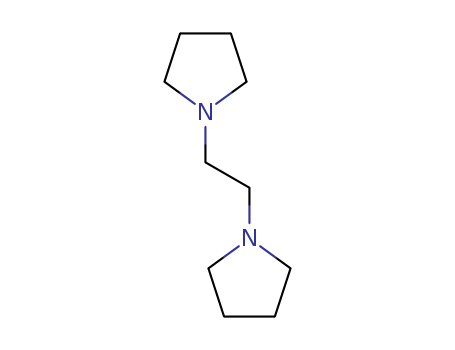- Chemical Name:1,2-Di(pyrrolidin-1-yl)ethane
- CAS No.:21408-05-9
- Molecular Formula:C10H20 N2
- Molecular Weight:168.282
- Hs Code.:2933990090
- DSSTox Substance ID:DTXSID40453773
- Nikkaji Number:J973.350G
- Mol file:21408-05-9.mol
Synonyms:21408-05-9;1,2-Di(pyrrolidin-1-yl)ethane;1,2-dipyrrolidinoethane;1-(2-pyrrolidin-1-ylethyl)pyrrolidine;1,2-Dipyrrolizinoethane;1,2-Bis(pyrrolidino)ethane;SCHEMBL238611;DTXSID40453773;AKOS006242270;1,1'-(Ethane-1,2-diyl)dipyrrolidine;1-[2-(1-pyrrolidinyl)ethyl]pyrrolidine;1-[2-(pyrrolidin-1-yl)ethyl]pyrrolidine;FT-0606315;J-650072






